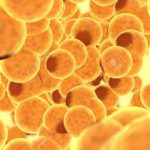Lien vers Pubmed [PMID] – 33559209
Lien DOI – 10.1111/imr.12952
Immunol Rev 2021 Feb; ():
While the existence of a special relationship between Mycobacterium tuberculosis (Mtb) and host lipids has long been known, it remains a challenging enigma. It was clearly established that Mtb requires host fatty acids (FAs) and cholesterol to produce energy, build its distinctive lipid-rich cell wall, and produce lipid virulence factors. It was also observed that in infected hosts, Mtb constantly resides in a FA-rich environment that the pathogen contributes to generate by inducing a lipid-laden “foamy” phenotype in host macrophages. These observations and the proximity between lipid droplets and phagosomes containing bacteria within infected macrophages gave rise to the hypothesis that Mtb reprograms host cell lipid metabolism to ensure a continuous supply of essential nutrients and its long-term persistence in vivo. However, recent studies question this principle by indicating that in Mtb-infected macrophages, lipid droplet formation prevents bacterial acquisition of host FAs while supporting the production of FA-derived protective lipid mediators. Further, in vivo investigations reveal discrete macrophage phenotypes linking the FA metabolisms of host cell and intracellular pathogen. Notably, FA storage within lipid droplets characterizes both macrophages controlling Mtb infection and dormant intracellular Mtb. In this review, we integrate findings from immunological and microbiological studies illustrating the new concept that cytoplasmic accumulation of FAs is a metabolic adaptation of macrophages to Mtb infection, which potentiates their antimycobacterial responses and forces the intracellular pathogen to shift into fat-saving, survival mode.


